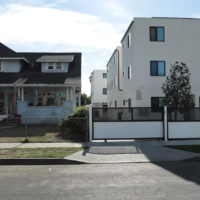Lens Explores Low-Density Zoning Impact on Health
Associate Professor of Urban Planning and Public Policy Michael Lens published a policy brief in Health Affairs on the downstream effects of low-density residential zoning on health and health equity. Previous research on the relationship between housing and health has identified four important pathways for health equity: housing stability, housing quality and safety, neighborhood characteristics and affordability. While residential zoning ordinances are designed to address density-related concerns such as traffic and environmental harms, Lens explained that “the effect is often to artificially raise the cost of housing for everyone by limiting housing supply, as well as to exclude people who cannot afford to buy single-family homes on large lots.” As a result, low-density zoning practices have exacerbated segregation by income and race. “Safer and healthier neighborhoods tend to have the most restrictive zoning, pricing people out of those areas and increasing segregation and affordability problems,” Lens said. He acknowledged that zoning reform alone cannot fix disparities in housing or health; sufficient housing subsidy programs are crucial, as well as an increase in new housing developments that are required to set aside some units for lower-income households. “The downstream effects of exclusionary land use regulations on health should make scholars and policymakers pay more attention to reforming zoning and expanding housing subsidy programs to make housing more plentiful and affordable,” Lens wrote. Even if increasing density in more neighborhoods does not have an immediate effect on housing affordability, segregation or health, Lens argued that it is a necessary step toward a healthy and sustainable future.










Leave a Reply
Want to join the discussion?Feel free to contribute!